Table of Contents
I’ve been on the hunt for the perfect tent for some time, with the intention of taking it on my two-year bike tour: CyclingAbout The Americas.
Having used dozens of tents over the years, I feel like I’m getting closer to a tent that is suitable for my needs.
This will be an in-depth Mont Moondance tent review, offering a tour of all of the features, as well as my thoughts after six months with the tent.
For bicycle touring I prefer the following tent characteristics:
– Freestanding (you can’t use pegs on concrete)
– A tough floor (for protection against the elements)
– Brown or green in colour (camouflage)
– Two-person (so that I can sleep a friend or fit my gear inside)
– Dual vestibule (so that my friend can escape without sitting on me)
Note: I discuss these characteristics in more detail in my resource about buying a bicycle touring tent.
All of these things led me to Mont, an Australian outdoor gear manufacturer. I sent them an email informing them that their Moondance 2 tent looked, on paper, perfect for my needs. They were confident that I would love their tent, so they sent one out to test on my month-long trip in Japan, as well as a handful of winter nights in the Australian backcountry.
If it passed these tests, I would take it on my trip from Argentina to Alaska.
Mont Moondance Tent Review
Let’s do a bit of a tour first…
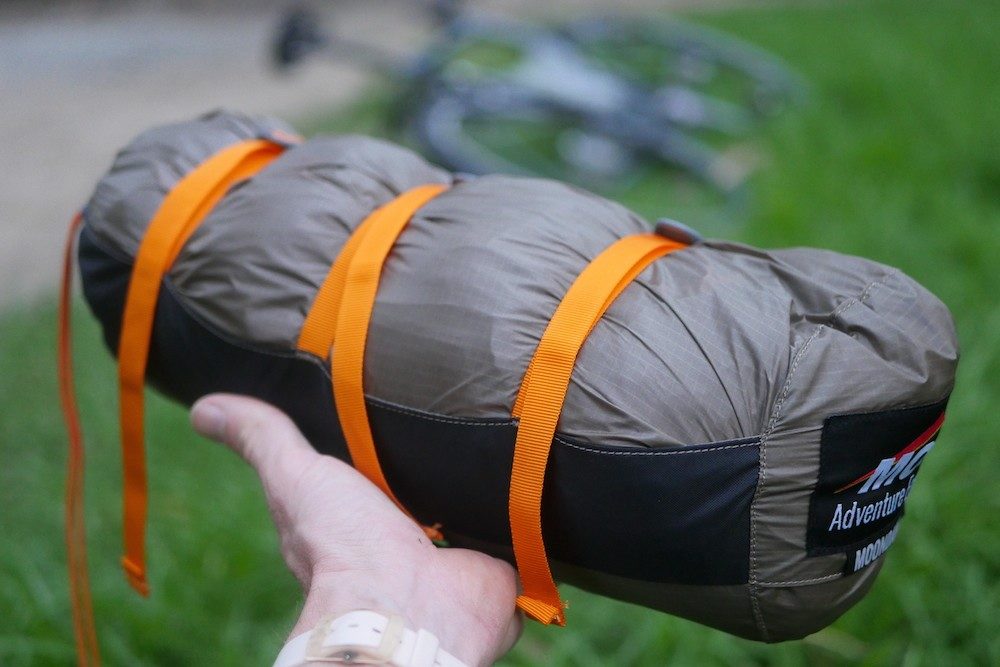
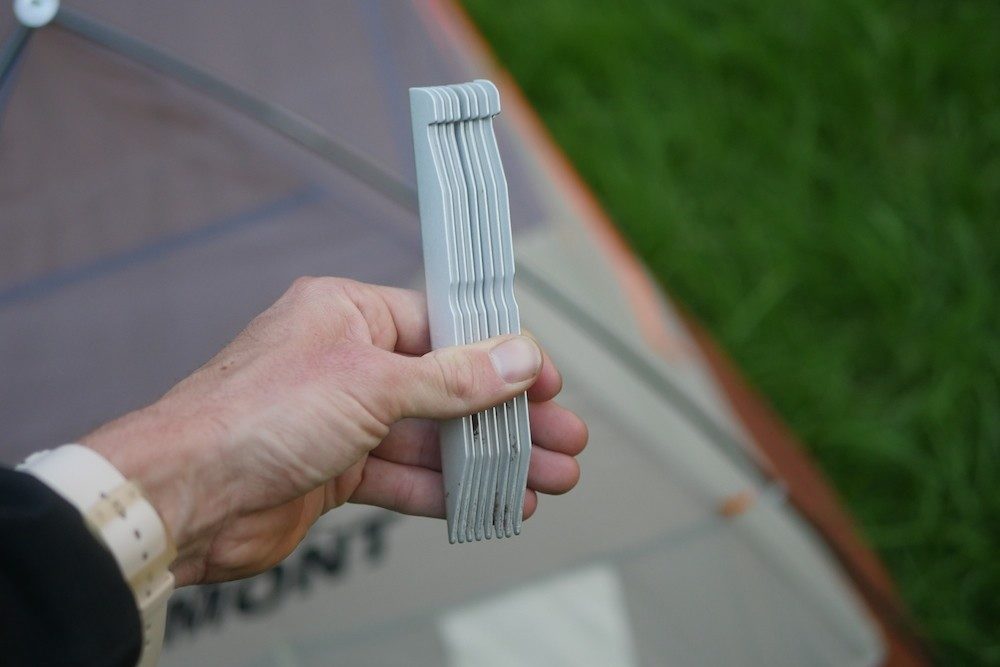
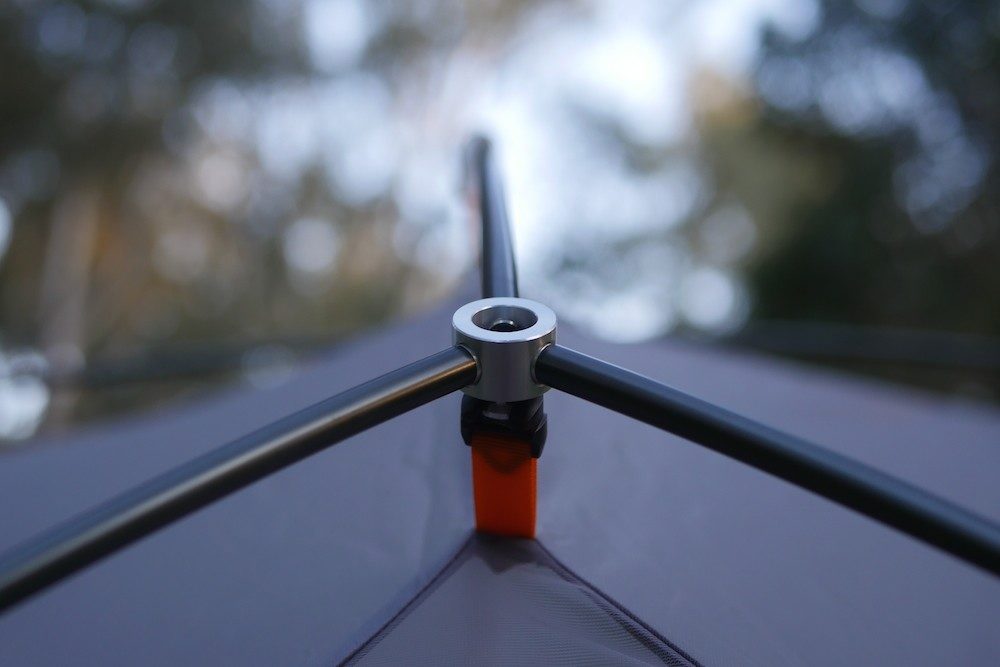
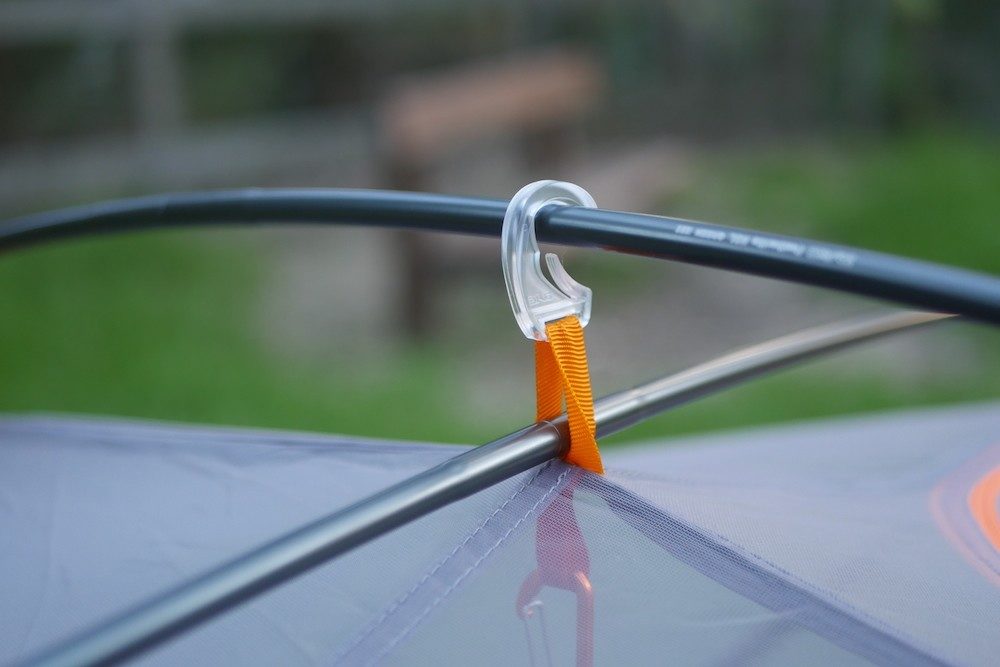
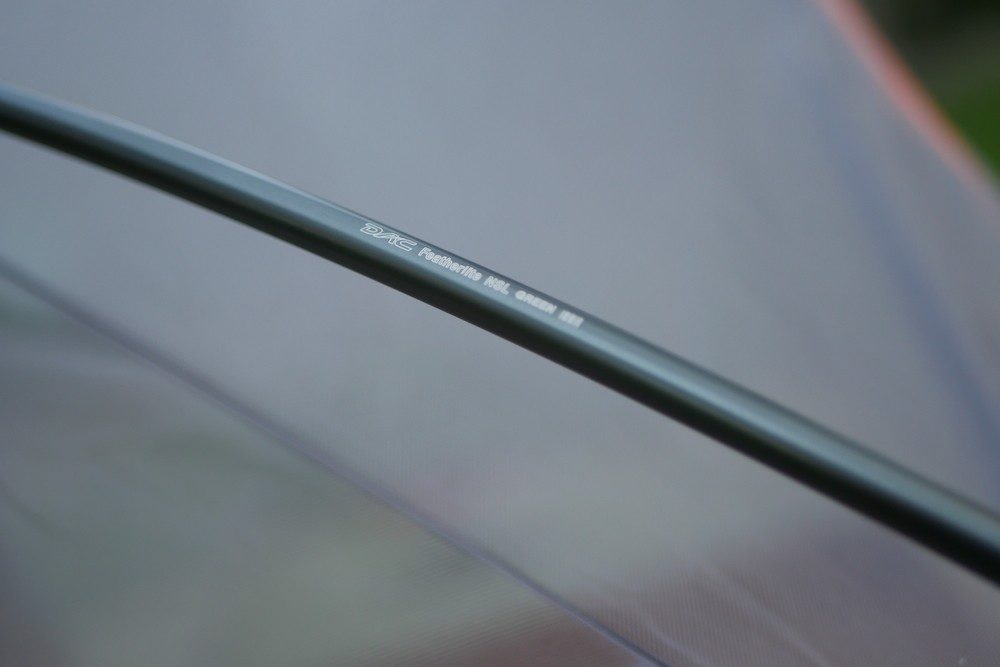
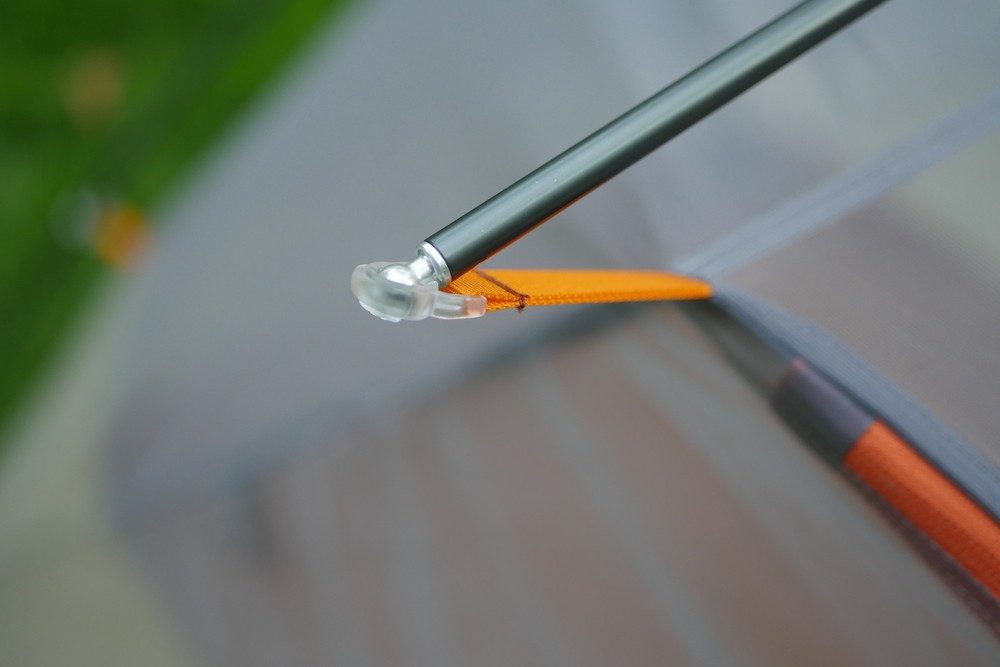
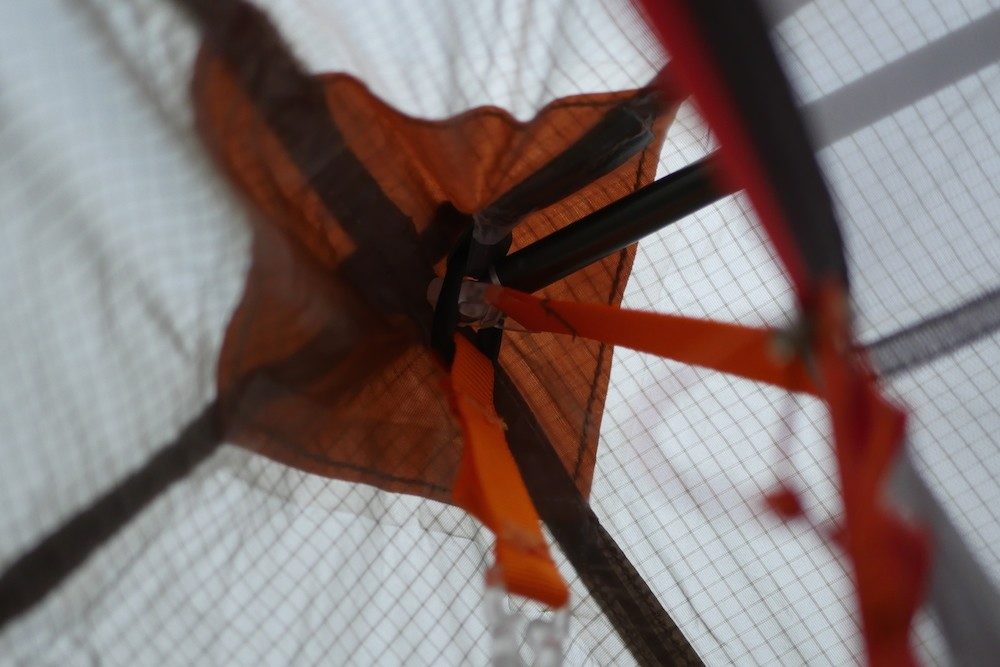
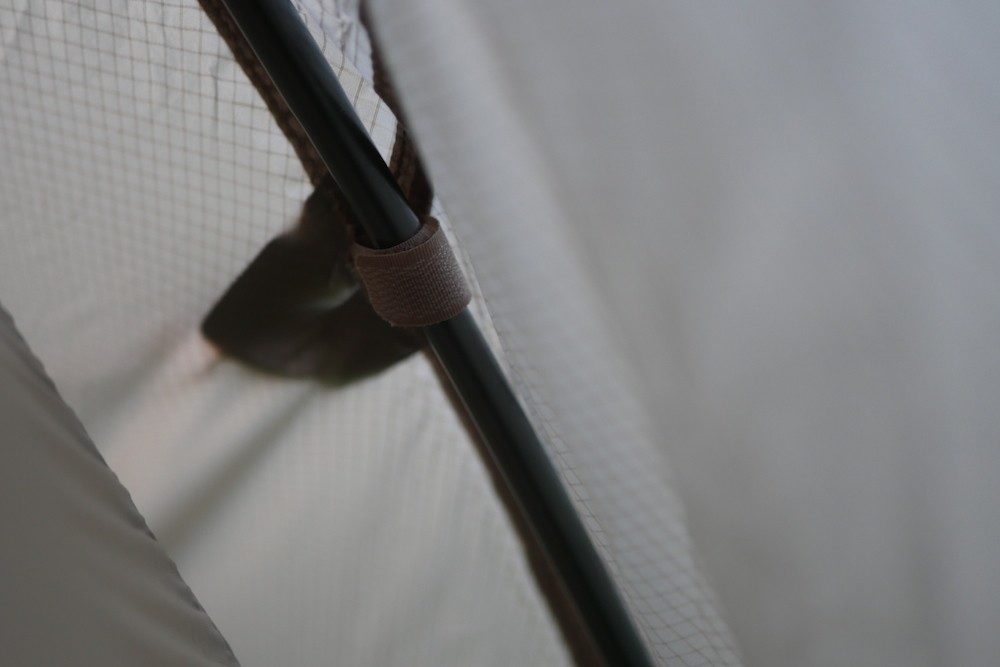
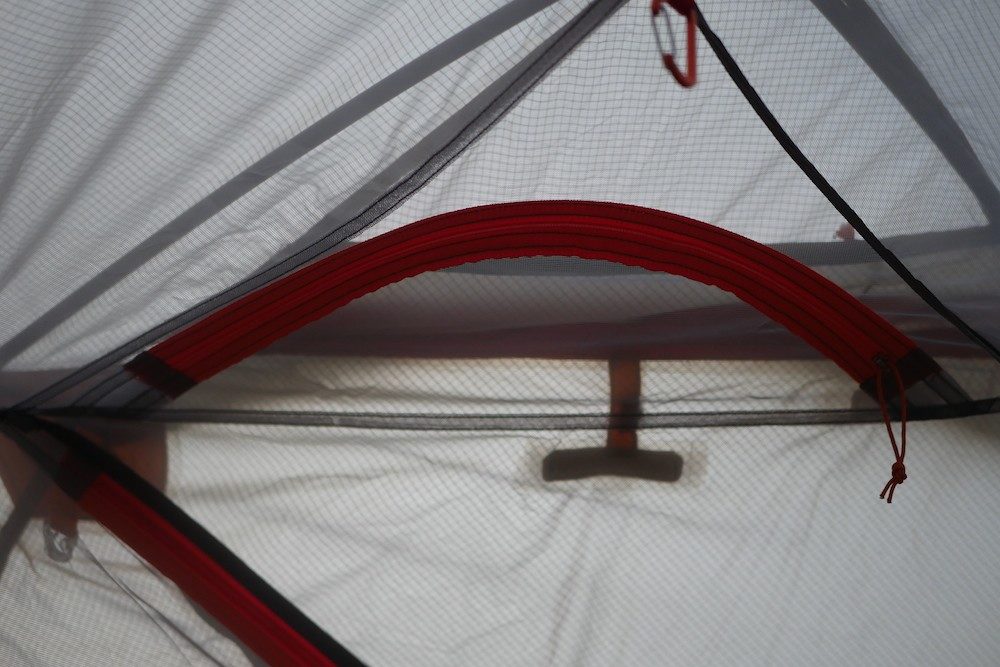
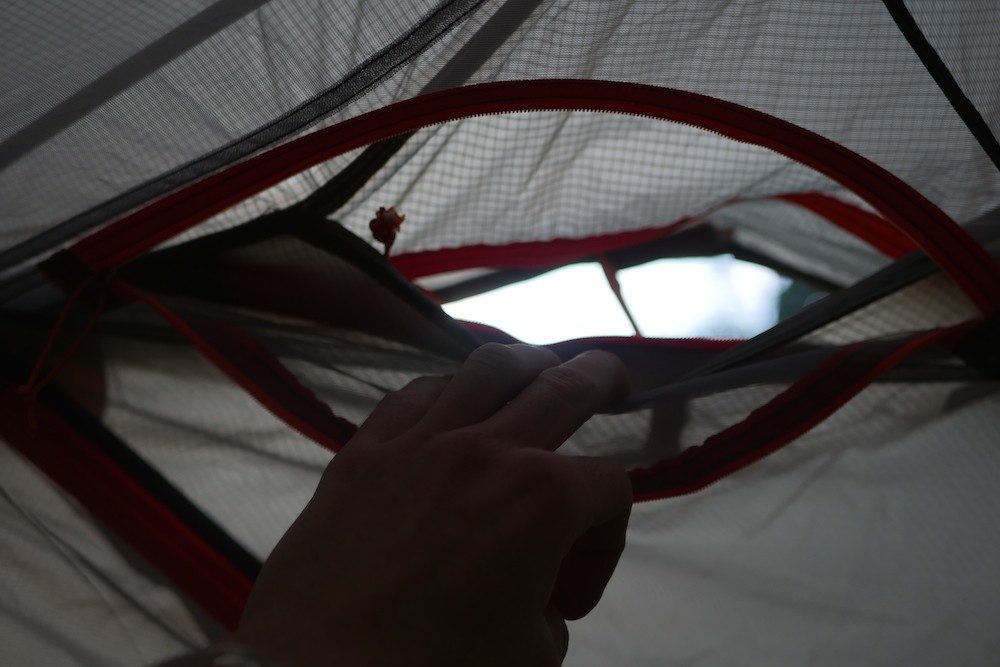
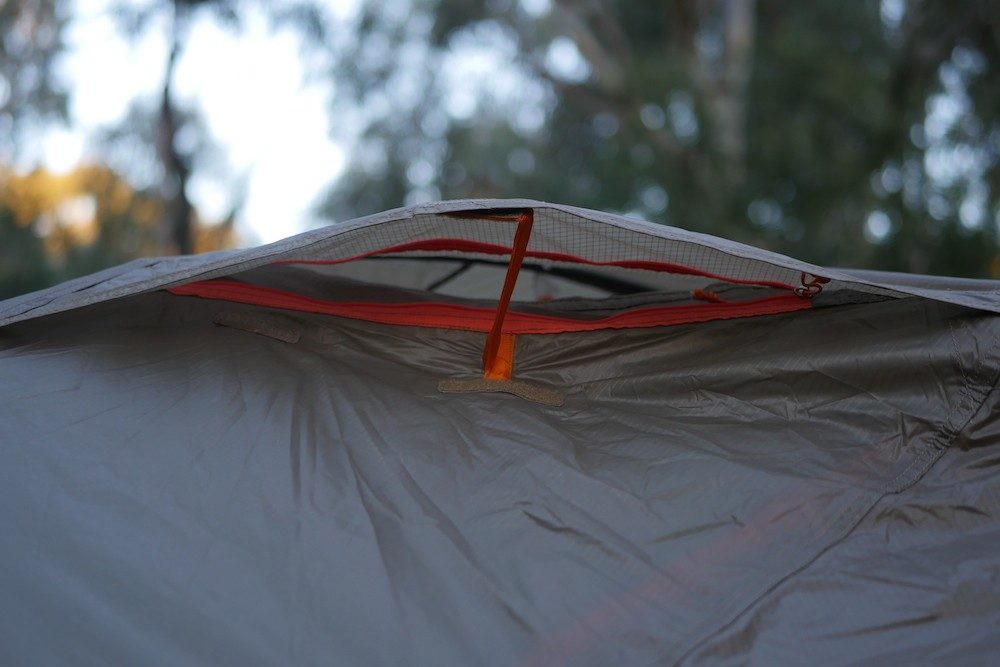
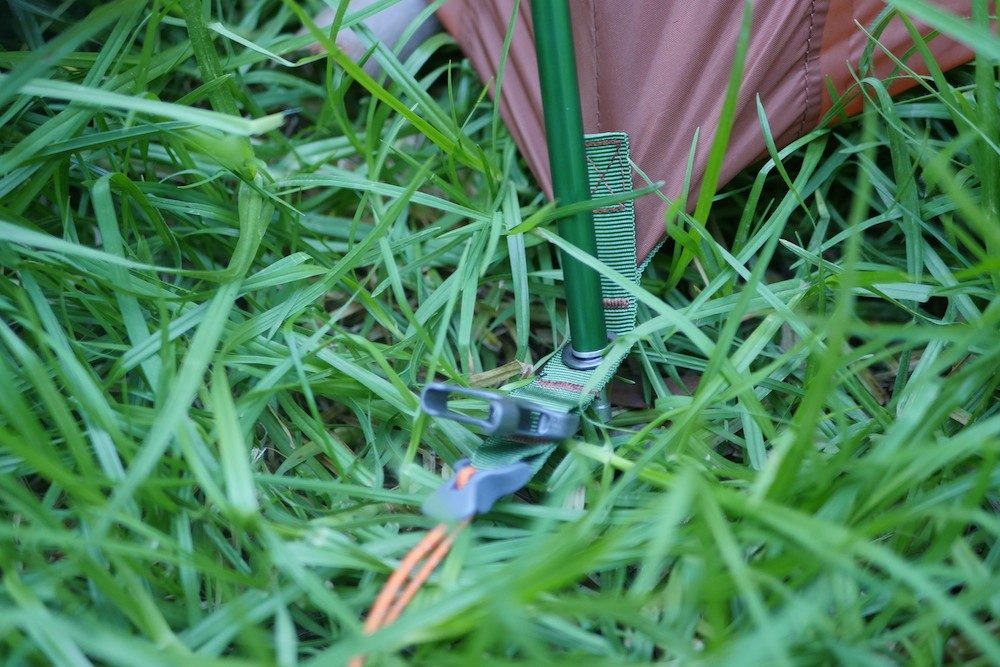
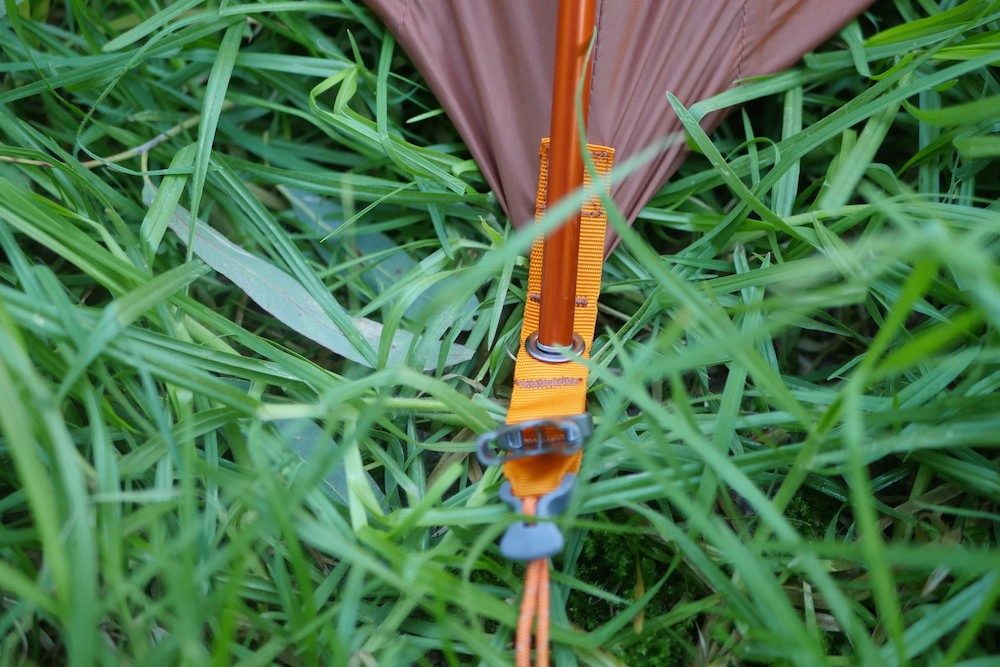
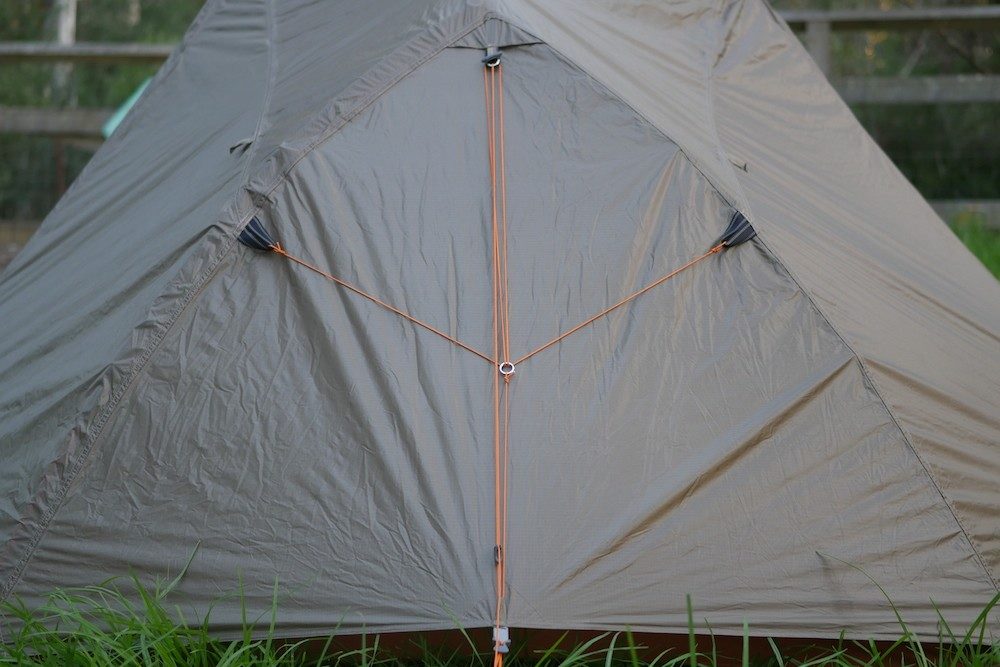
The Pitch
The Mont Moondance is a freestanding tent. This is my preference for bicycle touring because they can be pitched without any staking, you can pitch the tent without the fly, they have great ventilation and they have a smaller overall footprint.
Colour co-ordinated clips make pitching the Mont Moondance tent really easy. Your job is to remember is that the orange clips are where your head will rest, and you can then lay the inner in the orientation that suits. The poles snap together into the hubs to make the one-piece asymmetric frame.
You can then match the coloured tent poles and coloured tent clips. It’s fine to put the poles in one at a time as they will stay in place without popping out. The clips and hubs on the inner are now ready to be hooked up to the poles, and finally, the ridge pole can be inserted on top.
With the inner constructed, locate the coloured orange/green connectors on the fly and match them to the clips too. Stake out as much of the tent as you need, and should it be windy you may want to velcro the fly to the poles – these reinforcements will allow the guy ropes at the ends to better stabilise the tent in the wind.
The Floor
In an effort to drop the advertised weight, thick nylon floors are surprisingly uncommon amongst backpacking tents. The Mont Moondance is an exception here with one of the thickest floors I’ve come across on a sub-2000g tent.
To make sure my previous tent floors survive the distance, I’ve always coupled them with groundsheets. The thing is that groundsheets/footprints often weigh between 200-300 grams by themselves, which effectively brings lighter tents more in line with the weight of the Moondance.
While there is a groundsheet option from Mont (US $50), I don’t plan to use one because I feel confident the heavy-duty floor will last the distance. Not only is the floor tough, but I haven’t seen any water make its way up through the 10,000mm PU floor material.
On a side note, Mont makes a ‘3D footprint’ which is essentially a groundsheet with a 5-10cm wall that sits up around the edges. With the poles, fly and 3D footprint, you can have a pretty lightweight shelter that will prevent water ingress and creepy crawlies in your sleeping bag.
Two Inner Tent Options
This bit is super neat.
Mont produces two different tent inners depending on the season you’re camping in. Buying a second inner isn’t cheap – it’s US $270, but that works out cheaper than a second tent of this calibre.
Both Mont Moondance tent inners share the same floor, pole clips, pockets and zips. The difference is the upper: the summer inner uses No-See-Um mesh to allow heat to escape, while the winter inner uses 20D nylon from the floor to the roof.
The four-season inner is just 100 grams heavier and is what I’ve been using on trips with overnight temperatures below 10 degrees Celcius (50F).
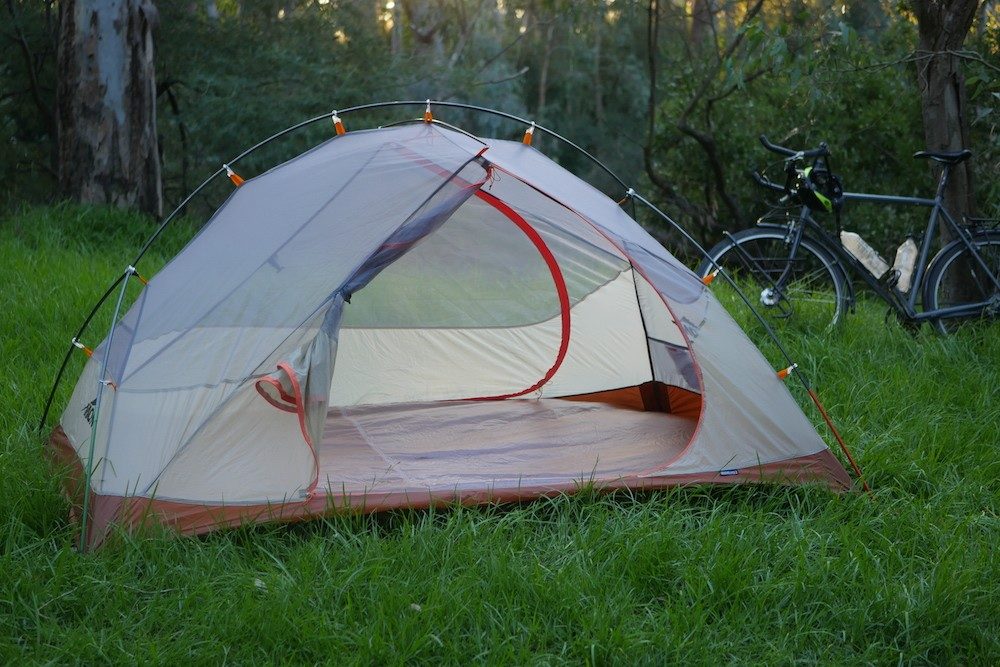
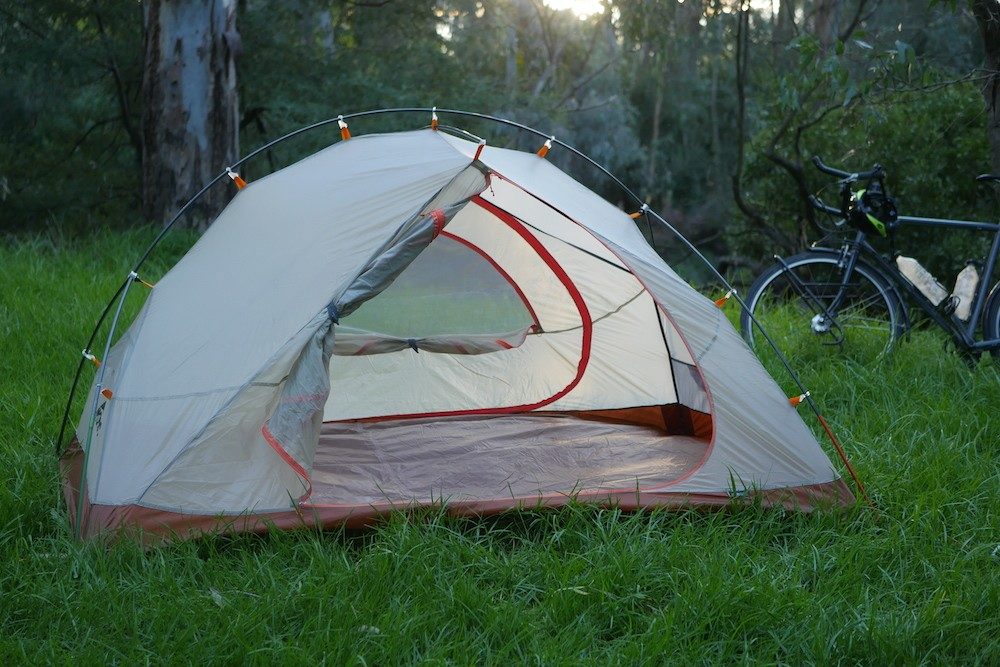
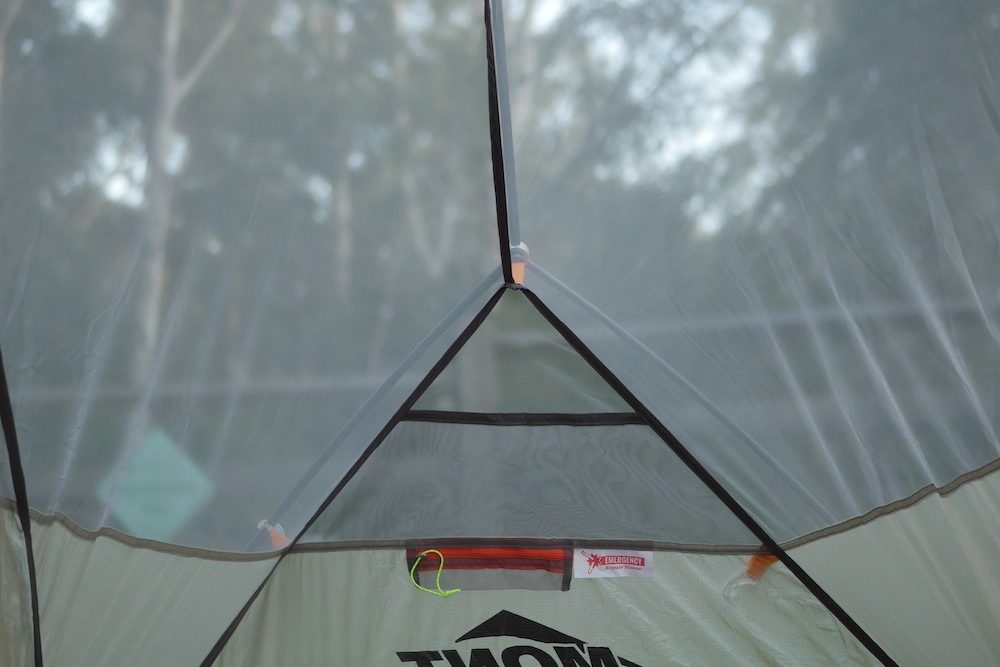
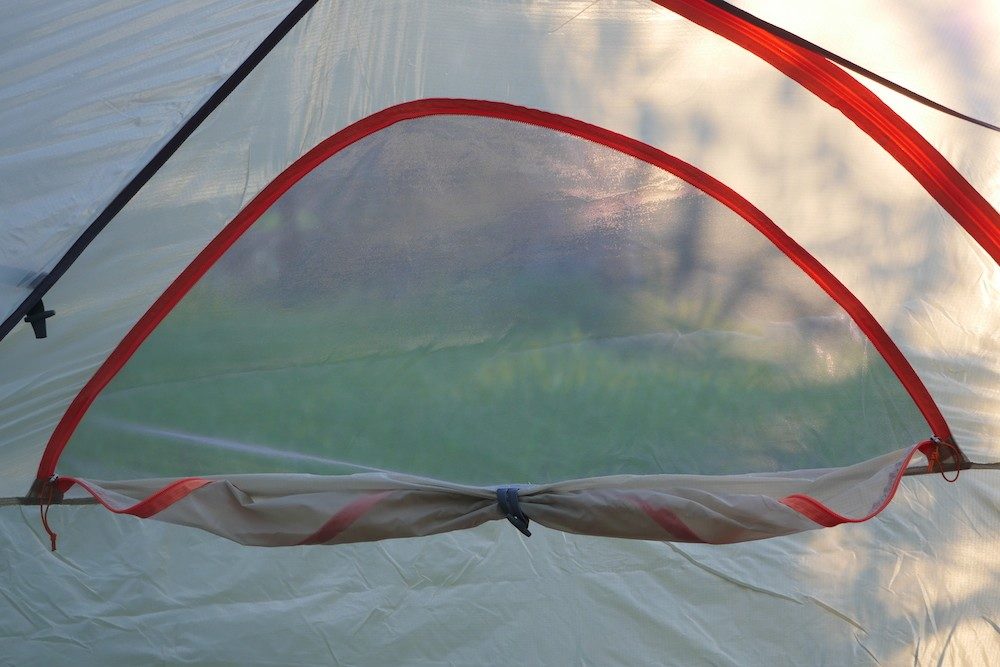
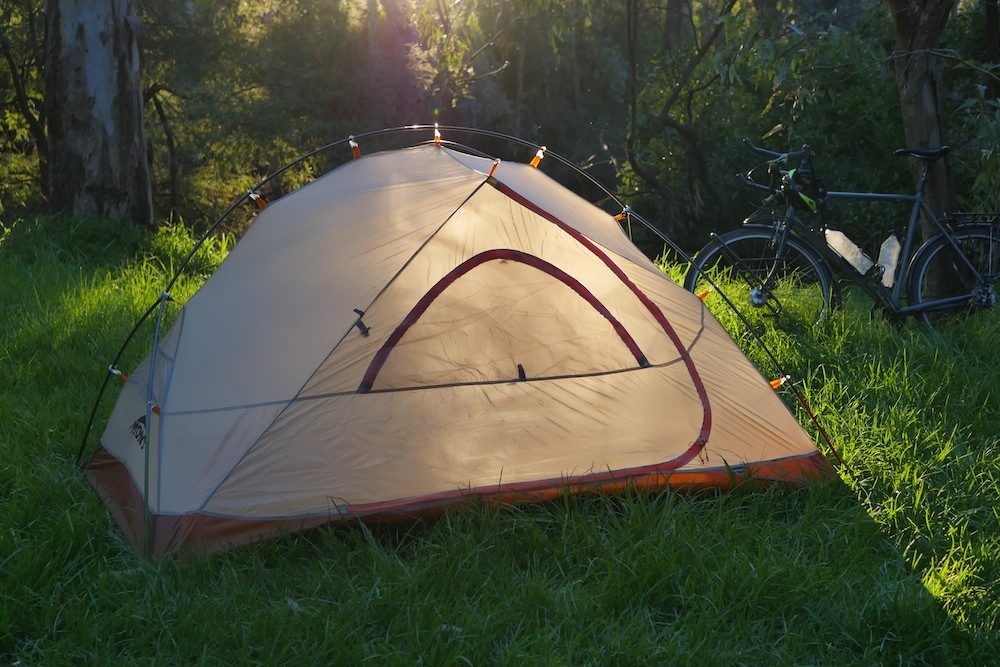
Impressions
I’ve now experienced most weather conditions in the Mont Moondance tent, with the exception of some ultra-high winds and heavy snow… but I’ll get that while CyclingAbout The Americas.
I’ve been really happy with how the tent has performed so far. Everything from the pitch to the design, to the quality and finish, appears to be top-notch. Even with my two-metre body plus a friend, there’s ample room for sitting up inside in the tent.
The dual doors are excellent for sneaking out at night for a quick whizz (pee) without waking your mate, and the fact the doors open really low means it’s easy to get in/out without shaking the tent.
The tent seems to ventilate well and the shape of the tent has meant I’ve never had condensation drip inside. In freezing conditions, the condensation builds on the fly overnight so you’ll need to be careful when packing up the tent.
Given I travel solo with a two-person tent (after all, one-person tents are not much smaller/lighter), I am afforded the luxury of having my gear inside my Mont Moondance tent for easy access. I also feel a bit better sleeping with all of my valuables by my side.
The Mont Moondance tent comes with a ‘care package’ including a pole repair sleeve, glue and some nylon for patching up any tears.

Would I Recommend It To A Mate?
Absolutely.
The Mont Moondance tent is well-made and hardy. It ticks all of my boxes in terms of being freestanding, having a tough floor and using a dual entrance/vestibule.
It is a touch on the pricey side at US $540, but I figure that if you use an expensive tent all the time they can be cheap on a per-night basis.
I’ve taken my Mont Moondance tent to Argentina with the four-season inner where I am expecting overnight low temperatures between -20 and 10 degrees Celcius for the first eight months. When I reach Ecuador I will send my four-season inner back to Australia and will switch it to the mesh inner for Colombia and Central America. And depending on the weather in Canada and Alaska, I may need to swap the inners over one more time before I finish.
Let’s see how we go.


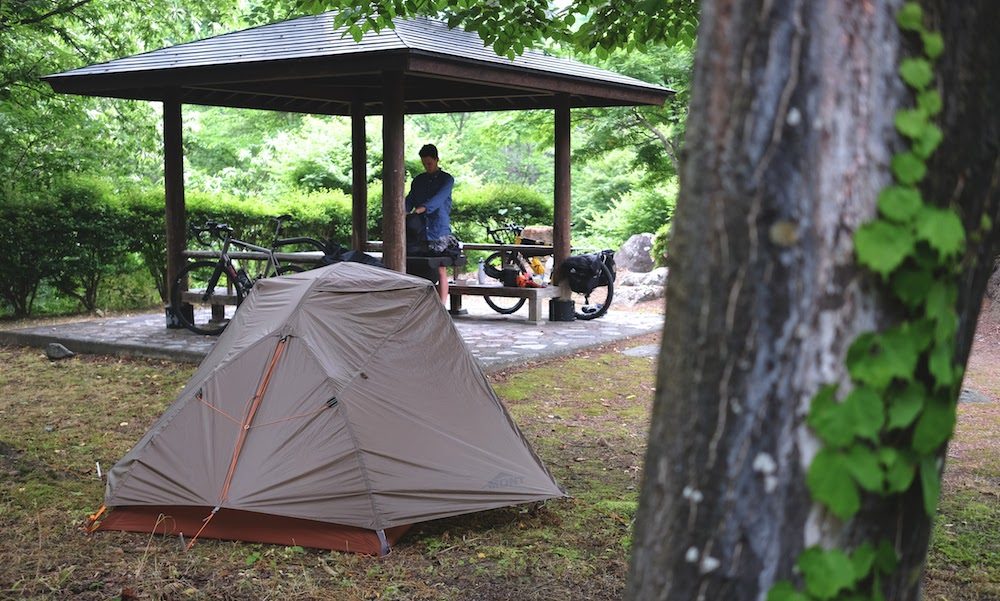
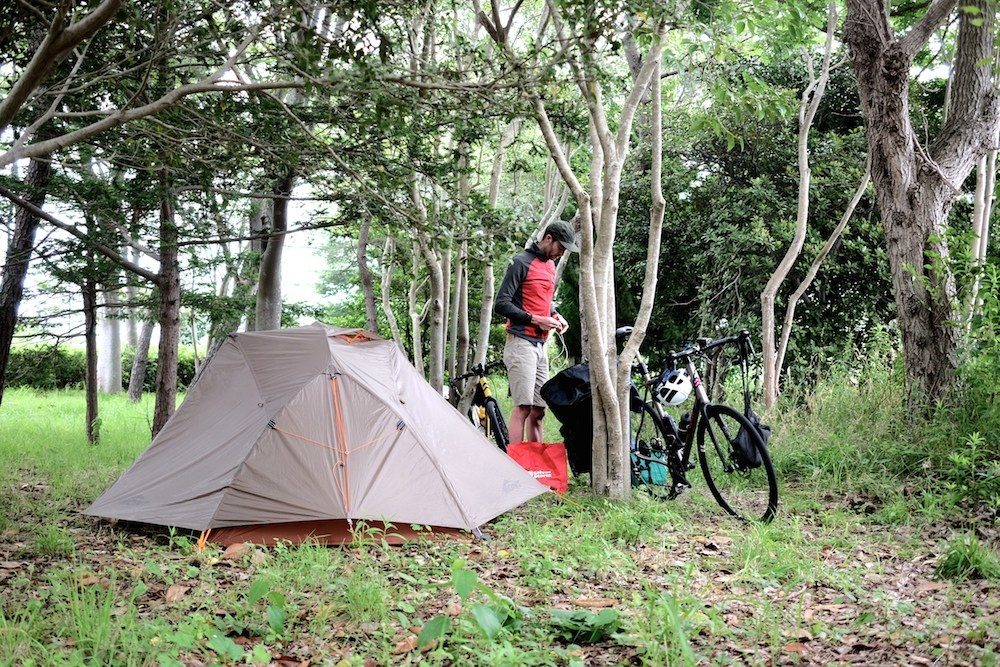
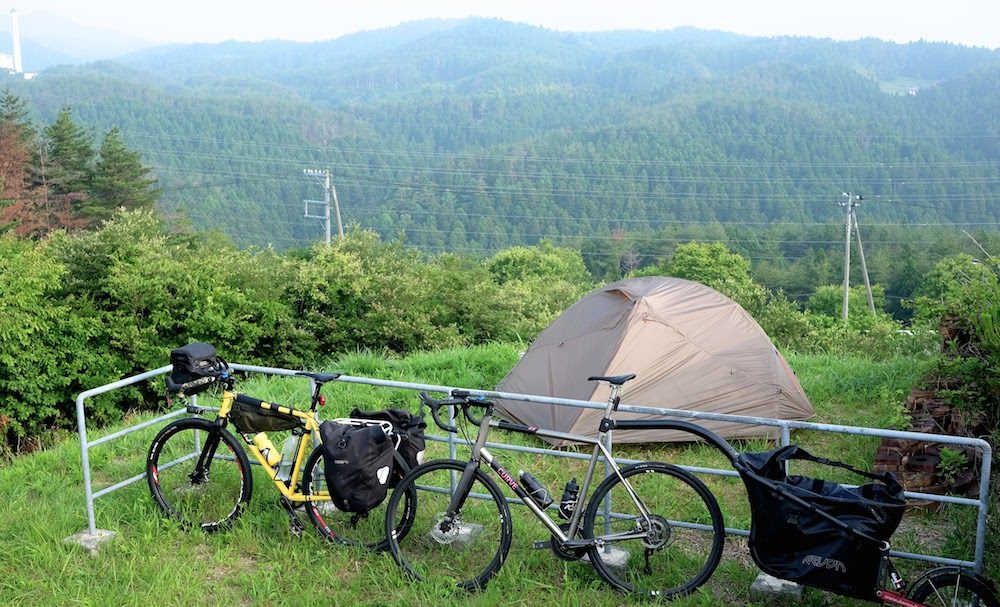
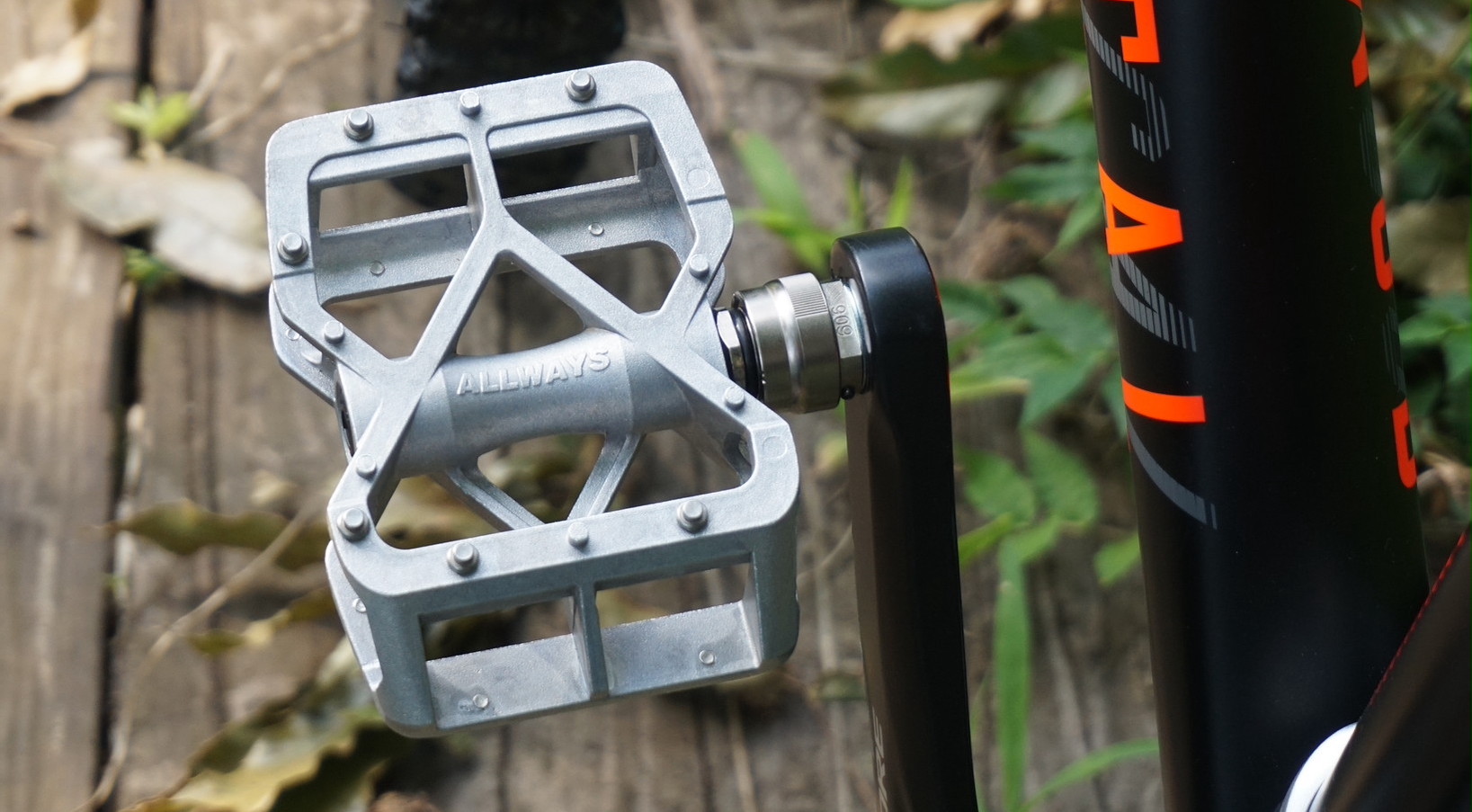
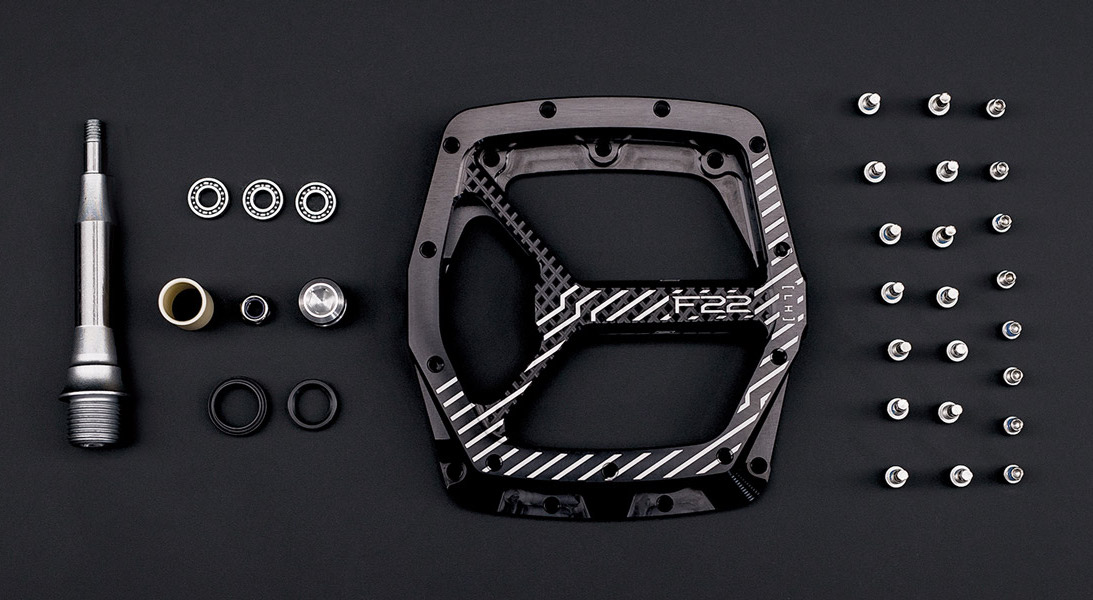
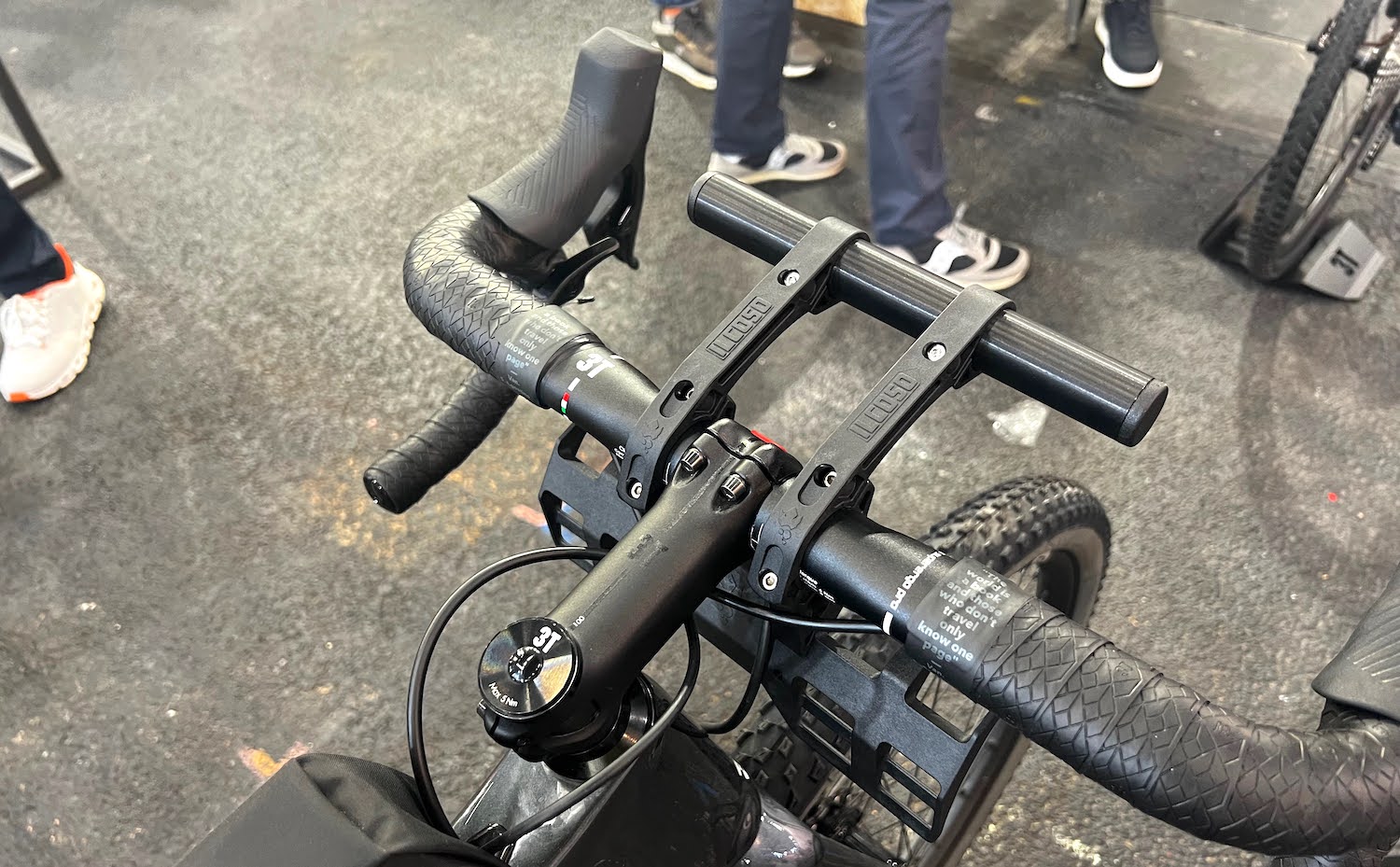

You might think twice about not having the winter inner while in Ecuador. Yes, it’s a hot country, but most cities all over South America were founded by the Spaniards
conquerors, and they chose higher, mountainous terrains to seek fresher climates: Caracas,
Bogotá, Quito, Lima, Mexico City… While daytime temperatures can be very hot, during the night they can drop to 15 Celsius and feel lower due to the winds.
i think that if you are going to ride in the americas you should get a better tent. that looks like a overnight hiking tent.also wind wind wind is a big deal
We will see if it makes it! I’m pretty confident given I’ve used similar tents on multi-year trips.
You can make any tent work,with repairs and just deal with it attitude. there are tents with the same wight made from more durable materials that you can stand up in”add heat for a few more pounds”for relatively close to the same cost.
Dislikes: the floor is not removable.
The materials do not reflect the price.
There’s one thing i like about the moondance and that’s the netting.
Wow multi year trips i’m going to have to read about them “and all the problems with the other tents”.My opinion is based on backpack hunting over the last 30 years and the gear i have used.I replaced my tuck”after my wife totaled it”with a bike.i am new to using a bike for getting my gear around on 2 wheels. Most of the the gear i have found for bikepacking/touring “long term outdoor living” to be over priced and made for day trips and replacement. this tent has the design and the materials for a short term clear weather tent.
add heat for a few pounds
I’d be interested in seeing the kind of tent you think would be perfect for a two year bike tour. A tent with the things you suggest: a removable floor, price relevant materials, a long-term build and nasty weather conquering.
I like the mesh option but I’m not so trusting of the pole hubs as they have been a week point on other brands…looking forward to the long term review!
Watching the tent in the Patagonian winds, the pole hubs do a really good job of stabilising everything. The tent seems to rock back and forth as opposed to getting pushed in all kinds of directions. We’ll see how they hold up in the long-term, but it’s cool that I can order a replacement set when mine get a little tired. 🙂
kifaru sawthooth with a medium stove.have had me my bed roll gear bike cut wood for a night and stove in it. has handled wind gusting to 70 mph. you can use sticks to set it up if a pole breaks or to save even more wight.tent poles pegs and sealent on the seams comes in at 4 pounds 8 oz,liner come in at just over a pound. my stoves about 5 pounds but you can get ones that are about 1 1/2 pounds.but the best part is you can dry all your gear, clothing and bike after getting in to the part of the the trip you will look back on fondly “in a few years”.
I’m now considering this tent for a trip to Kauai? I’m actually after as much ventilation as I can get but stable in winds for close to beach camping…
same like hubbhubba these tent are very good
Yes, the Mont has quite a similar design.
I’ve read the Hubba Hubba catches more wind than the Mont though…
After reading this and doing some additional research, the Moondance appears to be at the top of the pile for tents of this type, so I’ve ordered one. It’s a close run thing though, as there are a number of good alternatives, with the Moondance getting the nod primarily for its reasonably sturdy floor while staying under 2kg. The most robust I found is the Zemire Zeus from NZ, but at 2.8kg it’s a bit too heavy for (this) one person to carry on bike or back. It is, however, half the price of the others and Zempire has an excellent reputation, so if I didn’t mind lugging a bit more around, that would be my choice.
The Zeus looks pretty good, especially for the price. From my internet armchair, however, I can’t help but think the fly would touch the tent inner at the ends, on a wet/windy night…
Well spotted. The Moondance fly does have better support at the ends, ensuring better separation from the inner. That makes me more comfortable with my choice.